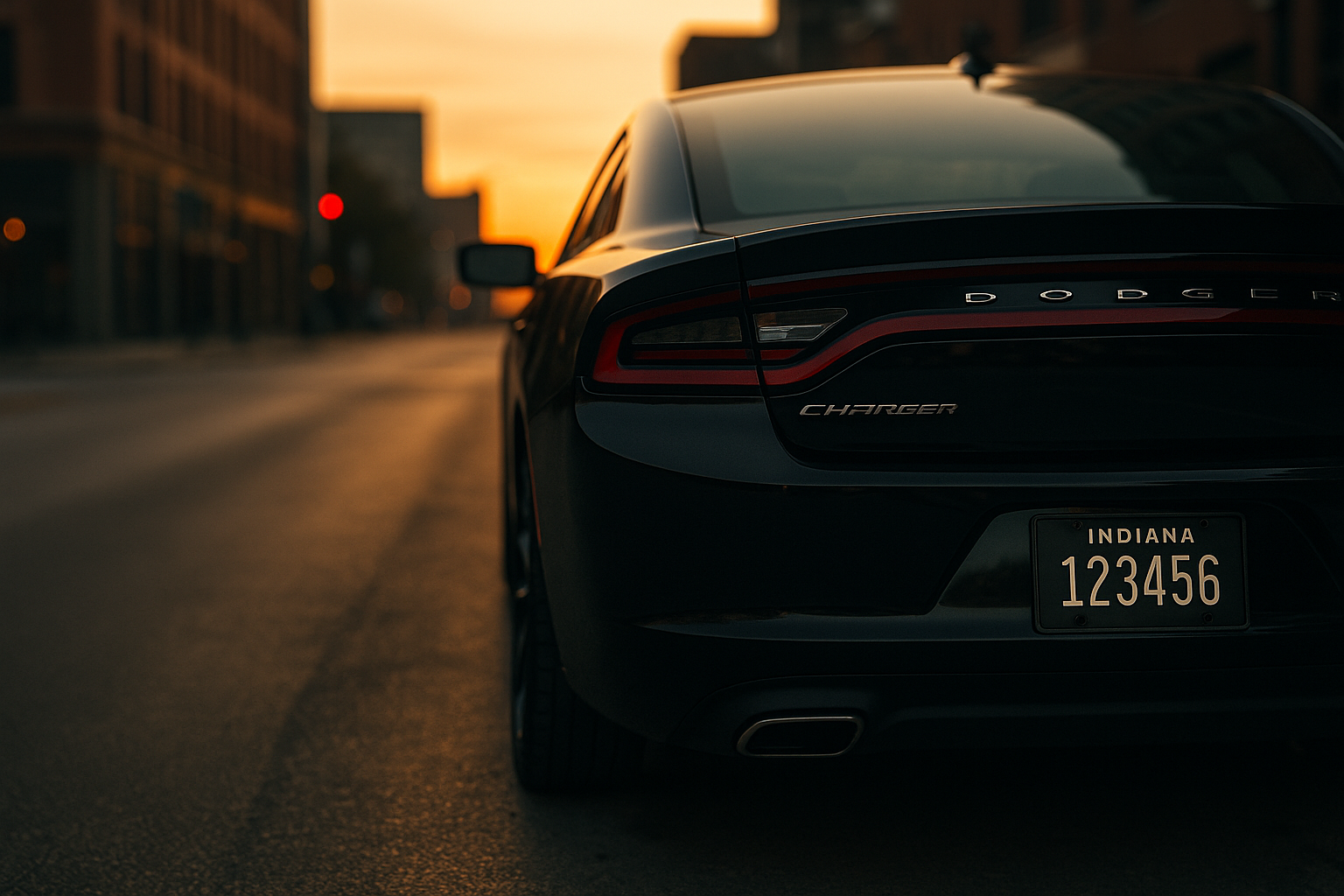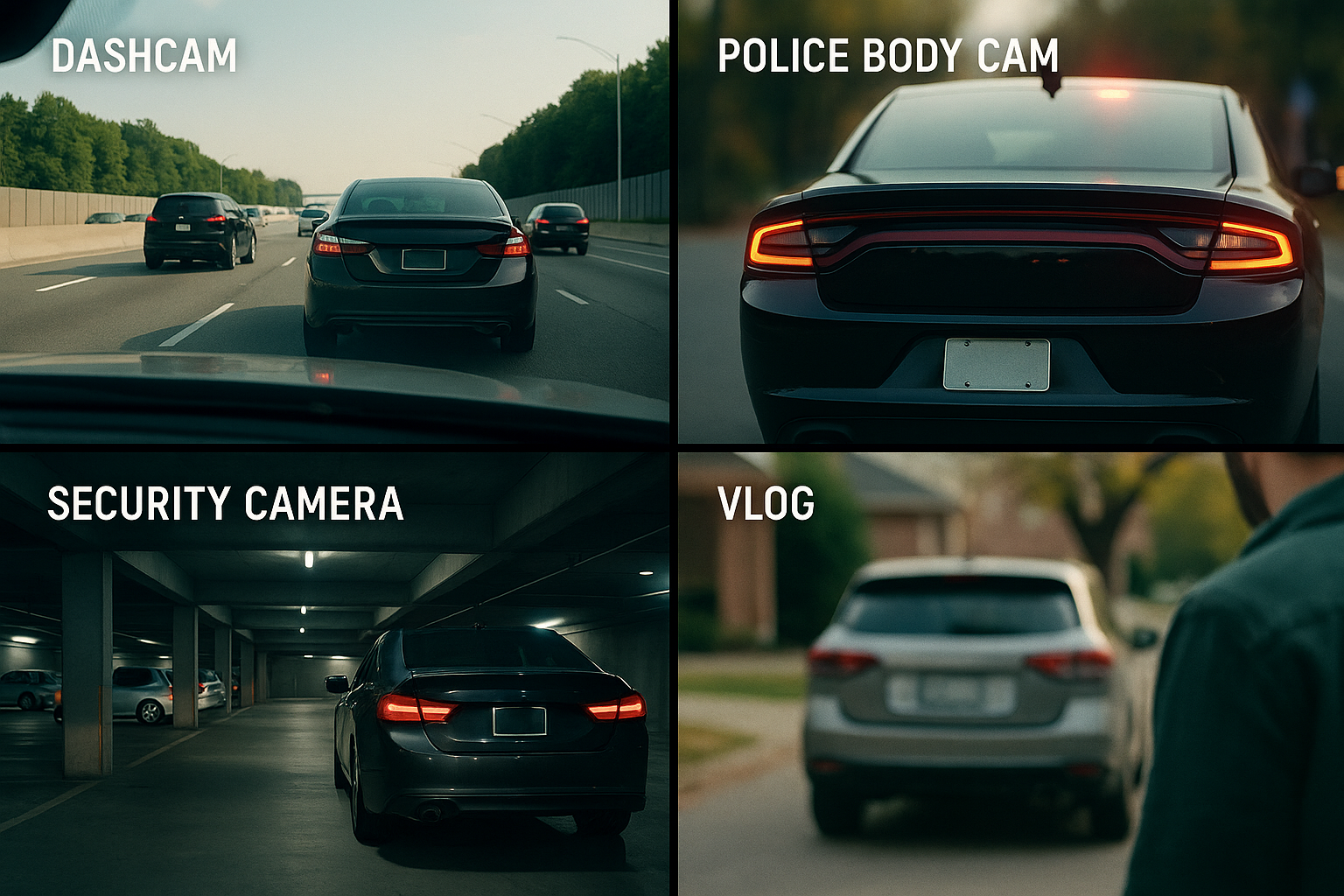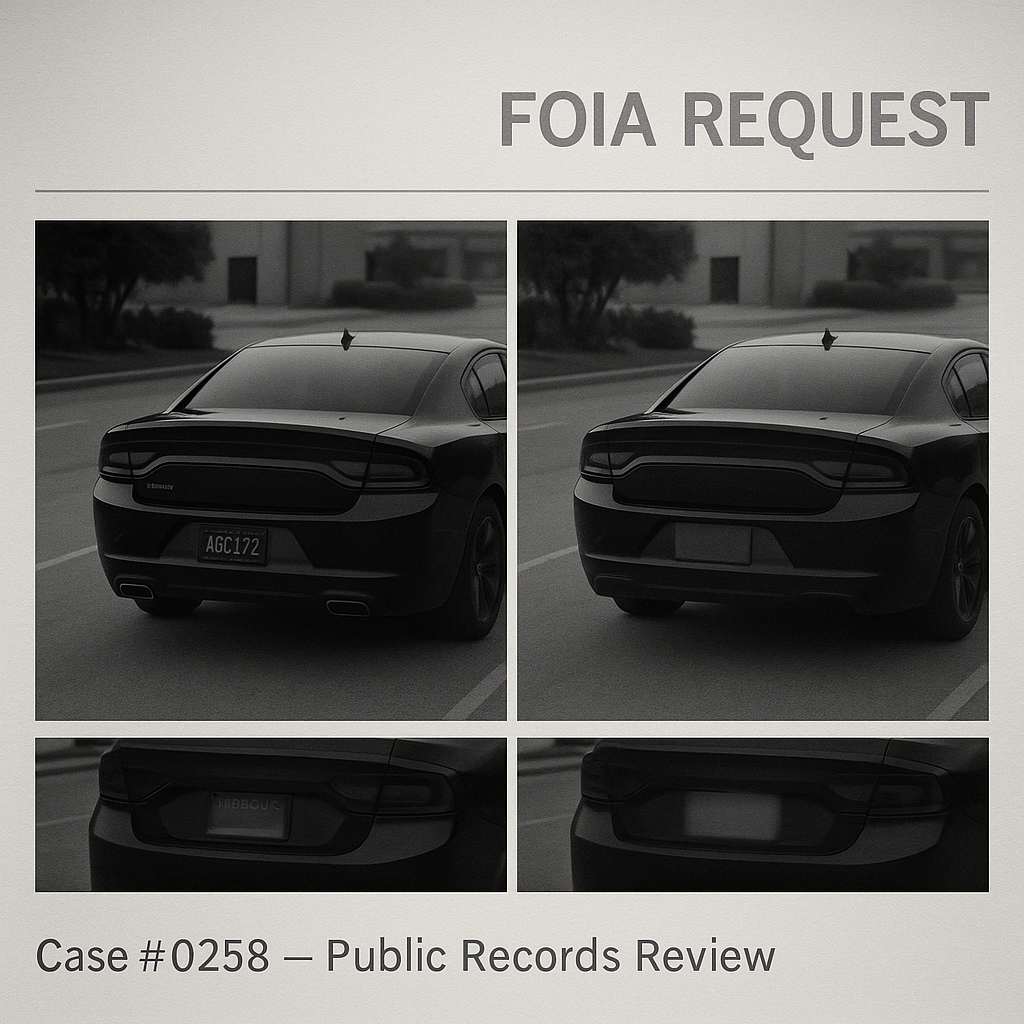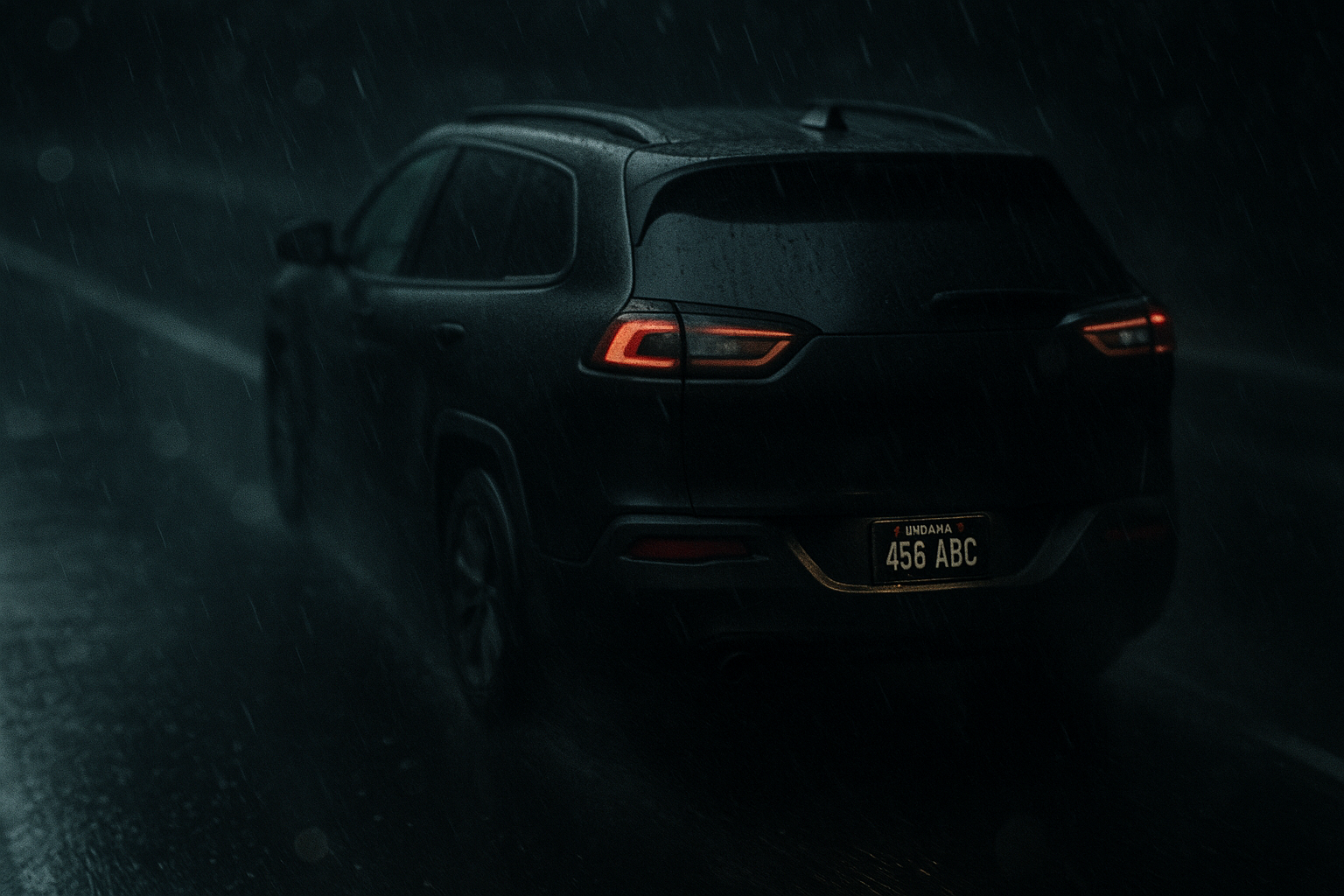
When the Indiana Bureau of Motor Vehicles (BMV) announced the release of new all black license plates earlier this month, the internet had opinions. Social media threads filled up instantly. News outlets jumped on the rollout. And Hoosiers began planning whether their next plate should match their matte-black SUV or their stealth-wrapped Charger.
Available for an additional $45 starting August 8, the new “blackout” plates are already shaping up to be one of the most buzzed-about BMV moves in recent memory. Style-forward drivers are excited. So are people who’ve long envied similar designs from states like Colorado and California.
But buried beneath all the talk of contrast, cost, and aesthetic, there’s a question no one seems to be asking:
What happens when these plates show up in your footage?

Let’s get this out of the way: license plates are not decorative. They’re identifiers: government-issued, regulated, and trackable. They’re increasingly being captured by:
That means these sleek new black plates?
They’re not just going on cars.
They’re going into evidence folders, video archives, and TikTok scrolls.

A quick dive into the top social media threads about the launch offers a valuable look into public perception:
The consensus? They look great, might even be more readable due to the contrast, and absolutely still show up in footage.
But there’s also confusion. Folks argue the state is sneakily making license plates easier to scan while charging drivers for the privilege. One commenter summed it up perfectly:
“Blackout doesn’t mean invisible, especially not to cameras.”
Exactly.
Here’s the core issue: in most U.S. states, especially under FOIA or public records laws, license plates in videos often qualify as personally identifiable information (PII). That means if a video, bodycam, dashcam, or surveillance, is shared publicly or handed over in a legal request, those plates must be reviewed, redacted, or justified.

The plate’s color doesn’t change its legal status.
Neither does its coolness.
Whether it’s an all-black vanity plate or a standard issue, if it links to an individual or can be used to track someone, it’s potentially protected information.
And here’s where things get tricky.
Video redaction isn’t just about blurring random rectangles anymore. Between AI-designed plates, customized text, reflective finishes, and new designs like Indiana’s blackout release, automated systems need more nuance and flexibility than ever before.
Some real-world factors that impact detection:
In these cases, color-dependent detection methods don’t cut it.
You need algorithms that understand context, structure, and plate geometry, not just contrast. You also need workflows that help users catch edge cases manually, without scrubbing through hours of footage frame-by-frame.

There’s a common misconception that blackout plates would either help or hurt plate readers. The truth is more boring: they don’t really change much.
Most automatic license plate recognition (ALPR) systems are already trained to handle plates of all styles, contrasts, and backgrounds. What affects performance more than color is reflectivity, obstructions (like mud or plate covers), and motion blur.

The rise of vanity and stylized plates might nudge error rates slightly, but ALPR systems built for enterprise or law enforcement use are well-equipped to read even the Indiana blackout variant.
But reading and redacting are two different things.
Reading plates is about detection and indexing.
Redacting license plates is about defensible privacy, removing or masking plates when that footage gets published, archived, or shared with the public.
Let’s take a look at a few places where this new plate style might surface, and why it matters:
Security teams in Indiana cities using fixed cameras or mobile surveillance rigs are about to see a lot more black-on-black plates. If your city has redaction or compliance obligations, these need to be handled with the same rigor as any other plate.
Indiana is one of many states where dashcam footage regularly makes it to YouTube or TikTok. Whether it’s a near miss, a funny interaction, or a road rage incident, license plates appear. And if you’re posting raw footage with visible PII, you’re potentially opening yourself up to complaints or takedowns.
Law enforcement and security teams dealing with FOIA requests can’t skip over plates because they’re dark or aesthetic. In fact, failure to redact these properly can lead to compliance issues, lawsuits, or breach of policy.
A modern redaction system, whether for public safety, legal teams, or private organizations, should check a few critical boxes:
If your current tools rely solely on color detection, visual tags, or require heavy manual work, you're not equipped for the blackout plate era.
And this isn’t about Indiana alone. More states are following suit with stylized, color-altered plates. The trend is clear: plates are becoming less standardized, more aesthetic, and more complex.
Without turning this into a product pitch, here’s what you should know:
Sighthound Redactor, used by law enforcement agencies, legal teams, and transit departments, already supports automated plate detection and redaction for:

And because it works offline, Redactor is trusted for workflows where cloud-based tools aren’t an option, like evidence handling, public agency use, or regulated storage environments.
You don’t need to train it on Indiana’s new design.
It just works.
Want to see for yourself?
Watch Redactor in Action
Take the Free Trial
The Indiana blackout plate is… undeniably cool.
It’s clean, minimal, and matches the aesthetic of modern vehicles. But once it leaves your driveway and enters the public sphere, on a road, in a garage, or in front of a security camera, it becomes something else:
A record.
A small but traceable piece of your identity.
And in a world where video is the new paper trail, the ability to catch and redact identifiers like license plates, no matter how stylish, isn’t just helpful. It’s necessary.
Want to learn more about AI-powered redaction? Try Sighthound Redactor today.
For business opportunities; explore our Partner Program today.
Published on: